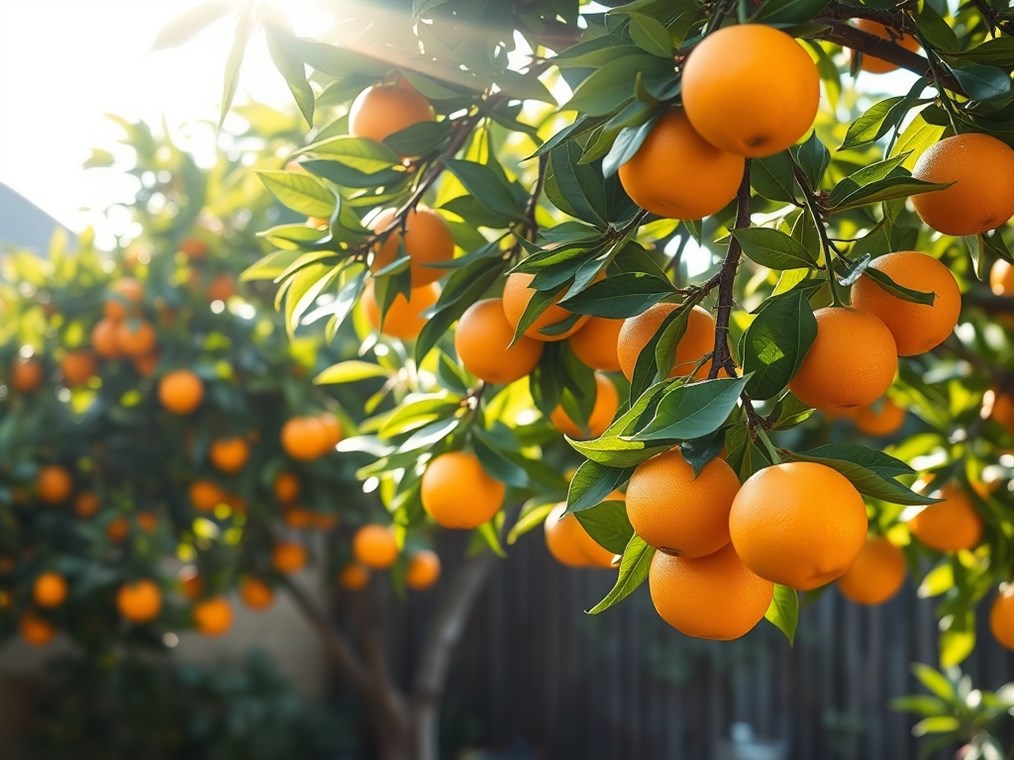So, You’re Wondering How Long Until You Can Finally Snag That Orange?
If you’re lucky enough to have an orange tree practically begging to be picked in your backyard, you know the feeling. That anticipation, right? You’re just itching for that perfectly ripe, juicy burst of sunshine. But here’s the thing: patience is everything. Unlike some fruits that keep getting better after you pluck them, oranges are divas. They hit their peak sweetness and flavor while they’re still hanging out on the branch. So, the million-dollar question: how long does this whole process really take? Well, it’s not quite as simple as checking your watch.
Think Months, Not Weeks (Seriously)
Generally speaking, you’re looking at about 6 to 8 months for an orange to go from flower to fantastic i. Yeah, I know, it feels like forever! But get this – some varieties can even stretch that out to a whopping 5 to 13 months i. Crazy, right? This long ripening period means your orange tree might be showing off its pretty blossoms and sporting ready-to-eat fruit all at the same time i. Talk about multitasking!
Orange Variety: It Makes All the Difference
The kind of orange tree you’ve got chilling in your yard is a huge factor in how long you’ll be waiting i. Think of it like dog breeds – a Chihuahua isn’t going to act like a Great Dane, right? Same deal with oranges. Here’s a sneak peek at when some popular types are usually ready for their close-up (aka, harvesting):
- Navel Oranges: November through June – perfect for those winter blues!
- Valencia Oranges: March to October – a long season of sunshine in every bite.
- Cara Cara Oranges: December to May – like a ruby-red surprise inside!
- Clementine Oranges: October to December/January – hello, easy-peel snacking!
- Pineapple Oranges: November to February – tropical vibes, anyone?
So, first things first, figure out what kind of orange tree you’ve got. It’s like knowing the rules of the game before you start playing.
Mother Nature’s Role: The Behind-the-Scenes Crew
Okay, so variety is key, but Mother Nature also has a major say in how quickly your oranges get their act together i. Here’s what she’s looking at:
- Climate: Oranges are happiest when the weather’s just right – think moderate temperatures (around 60-85°F), tons of sunshine, and enough water to keep them happy i. Basically, they’re sun-worshippers with a healthy thirst. The more summer heat, the faster they grow i.
- Temperature: Fun fact: a little chill in the air (we’re talking nighttime temps in the 30s) can actually boost the sweetness of your oranges i! It’s like a little kiss of cold that brings out all the sugary goodness.
- Sunlight: No surprise here – sunshine = sweeter fruit i. It’s like they’re solar-powered candy factories!
- Water: Thirsty trees don’t produce juicy oranges i. Consistent watering, especially when those leaves are growing, the flowers are blooming, and the fruit is setting, is crucial.
- Soil Quality: Happy roots, happy fruit i. Well-drained soil with the right pH is where it’s at.
- Tree Age: Here’s a cool tidbit: orange trees usually hit their prime around 6 or 7 years old i. But if you’ve got a grafted tree, you might be enjoying fruit in just 2 or 3 years i!
Beyond the Orange Color: How to Know When It’s Go-Time
Okay, so you think your orange looks ripe. It’s orange, right? Well, not so fast! Sometimes, that color can be a bit of a fibber. Some oranges, like Satsumas, can still have a greenish tint even when they’re perfectly ready to be devoured i. So, ditch the color chart and use your senses:
- Aroma: Close your eyes and take a whiff. A ripe orange should smell like, well, a ripe orange! Sweet, citrusy, and totally inviting i. If it smells funky or moldy, steer clear.
- Texture: Give it a gentle squeeze. It should feel firm, but with a little give i. And it should feel heavier than you expect for its size.
- Taste Test: This is the real test i. Pluck one (or a couple) from different spots on the tree and give them a try. If they taste sweet and delicious, you’re in business!
- Easy Detachment: A ripe orange should practically jump into your hand i. A gentle twist and pull should do the trick. If you’re wrestling with it, it’s probably not ready.
A Few Things to Keep in Mind
- They Don’t Get Better After Picking: Remember, oranges are divas. Once they’re off the tree, that’s it. They won’t get any sweeter or juicier i.
- Be Gentle!: When you’re harvesting, twist carefully until the stem pops off i. If you’re dealing with a thin-skinned variety, grab some clippers to avoid tearing the skin.
- Location, Location, Location: Where you live can seriously mess with ripening times i. A grapefruit in Sacramento might take a year and a half to ripen, while the same grapefruit in Coachella Valley could be ready in half that time. Crazy!
The Bottom Line
Growing oranges is a bit of a waiting game, no doubt. But by understanding all the little things that influence ripening – from the variety of your tree to the weather outside – you’ll be well on your way to enjoying a bumper crop of delicious, homegrown sunshine. Happy harvesting!

